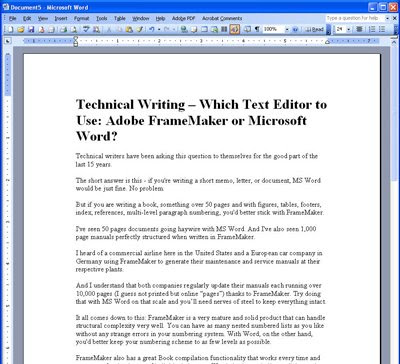Technical Writing – 3 Easy Ways to Capture Screenshots for your Print and Online Technical Documents
Screen shots are a must if you are a technical writer authoring a software manual of any kind.
Here are three easy methods to capture and use a screen shot that would increase your productivity and help your readers follow the procedural directions more easily.
1) If you use a Windows machine, press the Print Screen key to capture whatever you see on your monitor screen. This wholesale method captures both the window in focus and all the rest that you see in your screen display. The Print Screen label is sometimes abbreviated as “Print Scr,” “Prt Sc,” etc. but it is always located on the upper-right corner of your Windows keyboard.
This method will save the image to the clipboard. You can then paste the image (Ctrl+V) into any text or image editing program and use it in any way you like.

A screenshot captured with the simple PrintScreen method
2) For Windows machines: to take a screen shot of only the window in focus, the “active window,” press Alt and Print Screen keys together. This will again save the image in the clipboard. You can paste and use it in any way you like.
PhotoShop tip: If, after taking a screenshot by using methods 1 or 2, you press Ctrl+N, PhotoShop will create a blank screen exactly the size of your image saved to the clipboard. When you paste the image into this new window by pressing Ctrl+V, it will fit the Photoshop window perfectly.
3) If you are using a Mac, press Command+Shift+3 keys together to save the image of the active window to your Desktop with a generic file name like “Picture1.”
To define your own image area, press Command+Shift+4 keys together to transform your cursor into a circle with cross-hairs in the center. Drag the cross-hairs over the screen area that you want to capture. When you release it, Mac will save the image to your Desktop with a generic name and a distinct “camera shutter” sound.
If you also press the Ctrl as a fourth key with any of the above combinations, your Mac will save the image to the clipboard instead of the Desktop.
